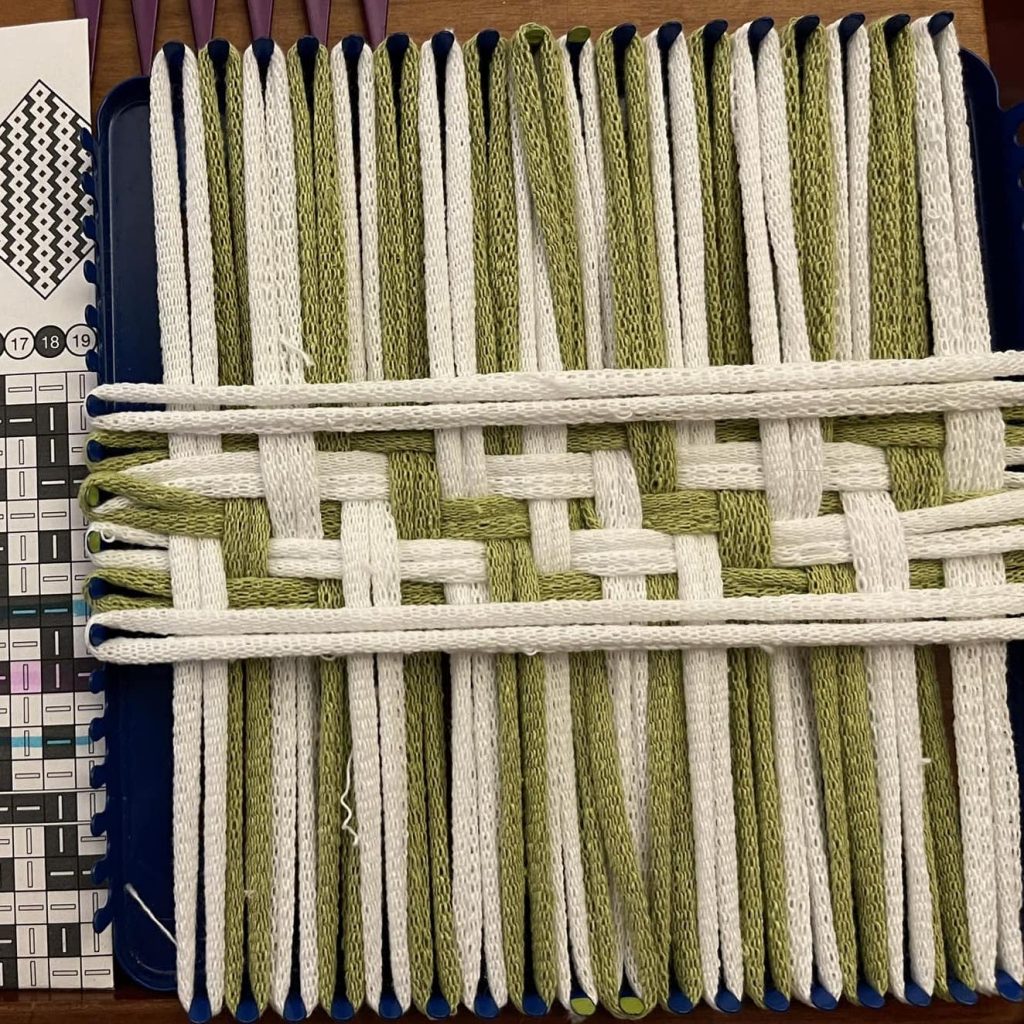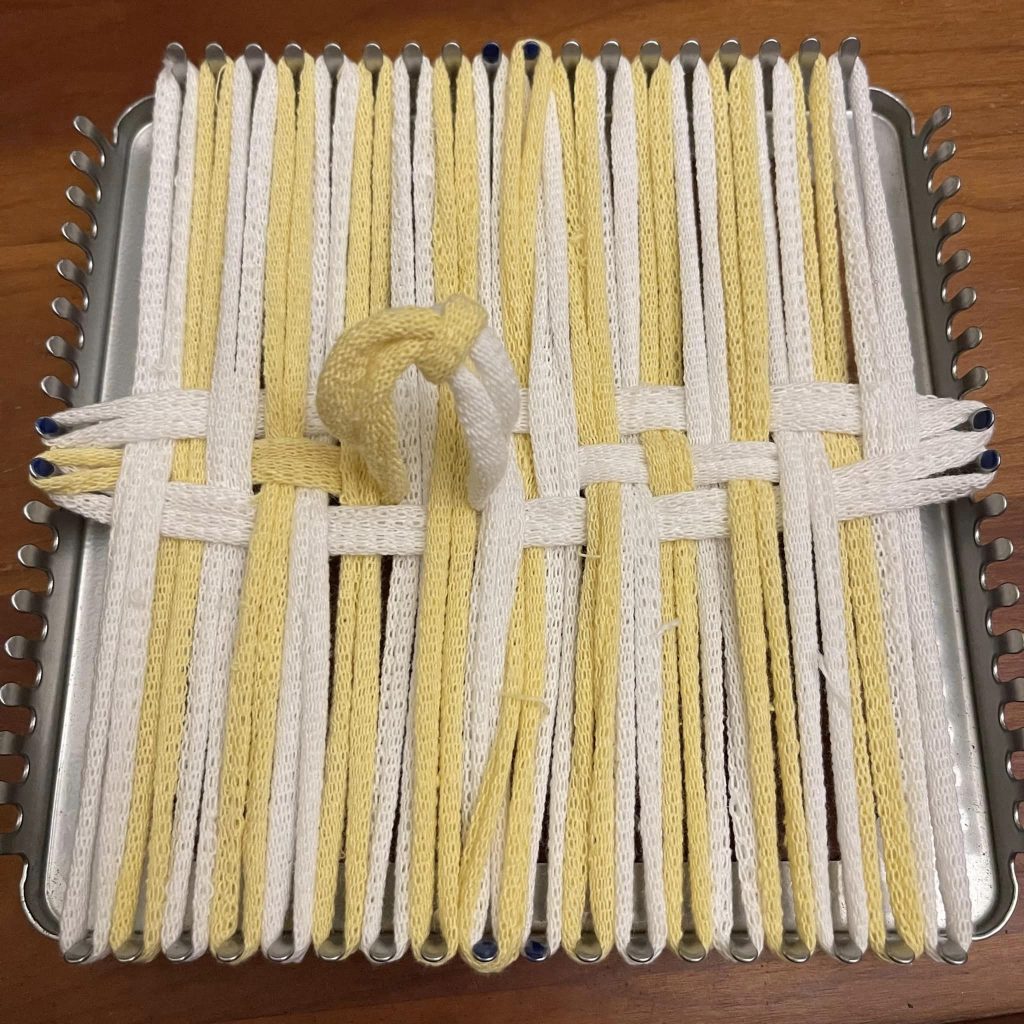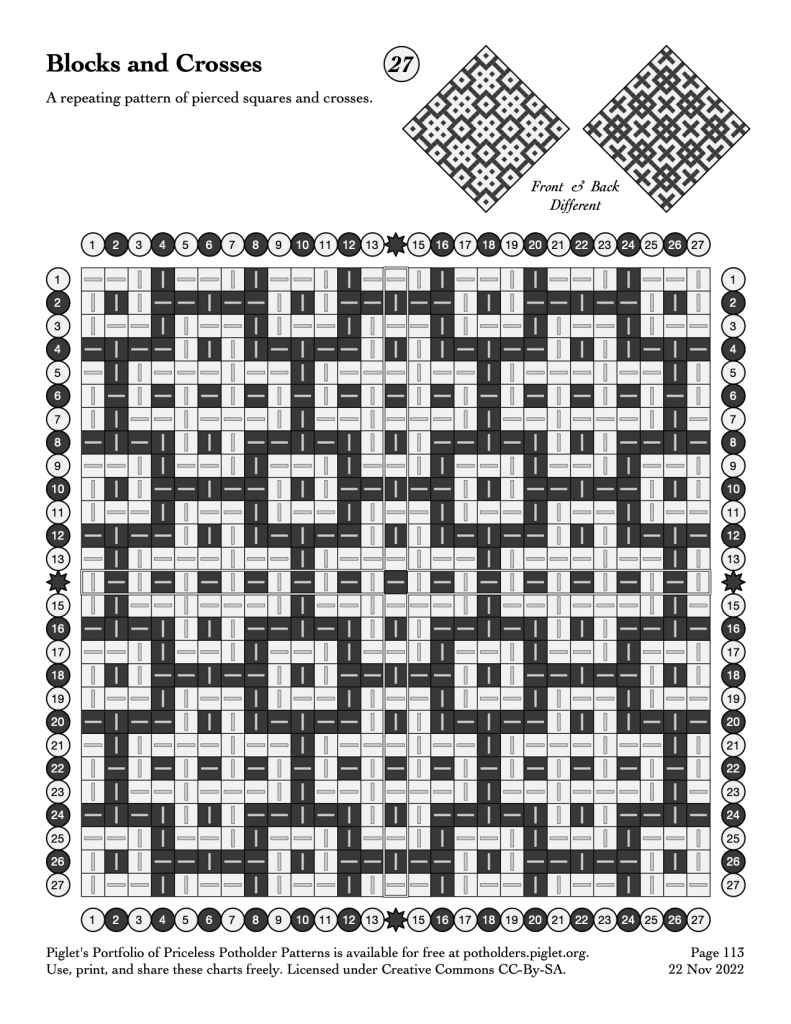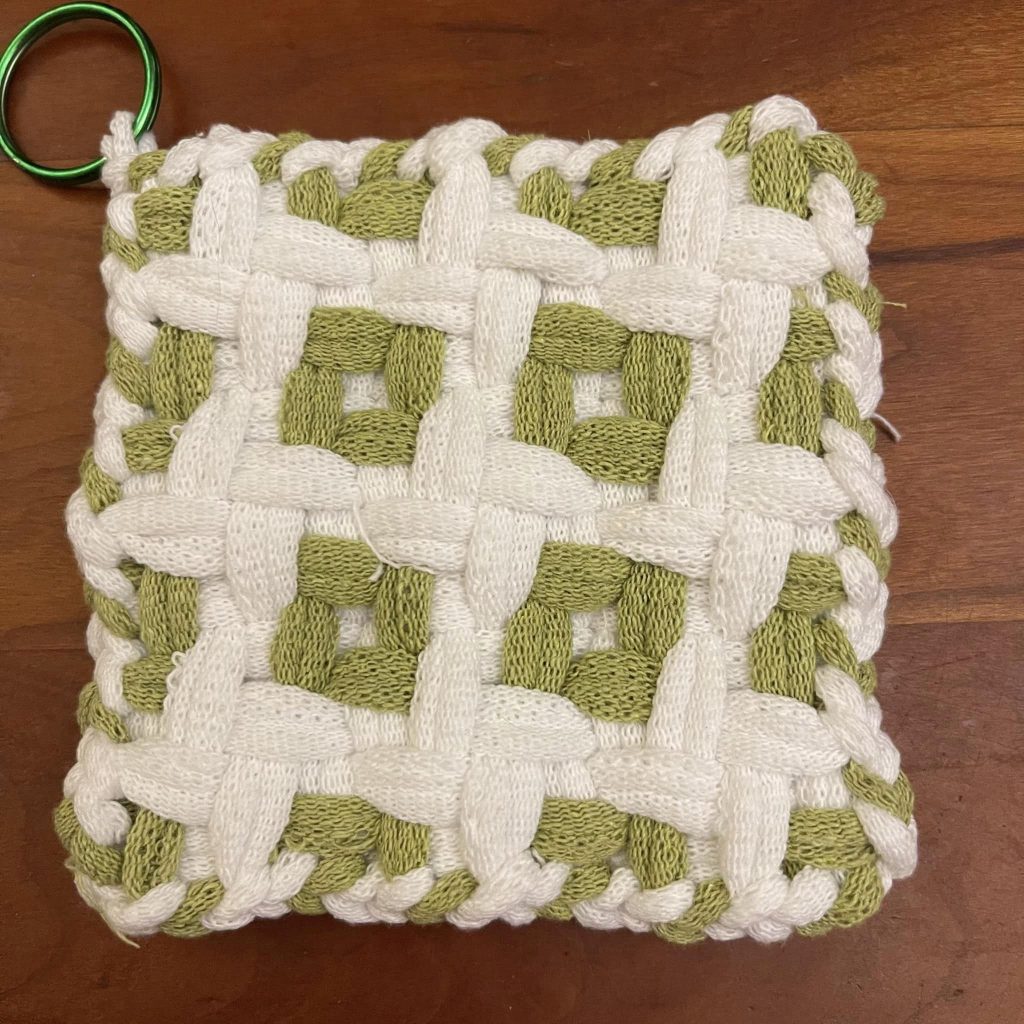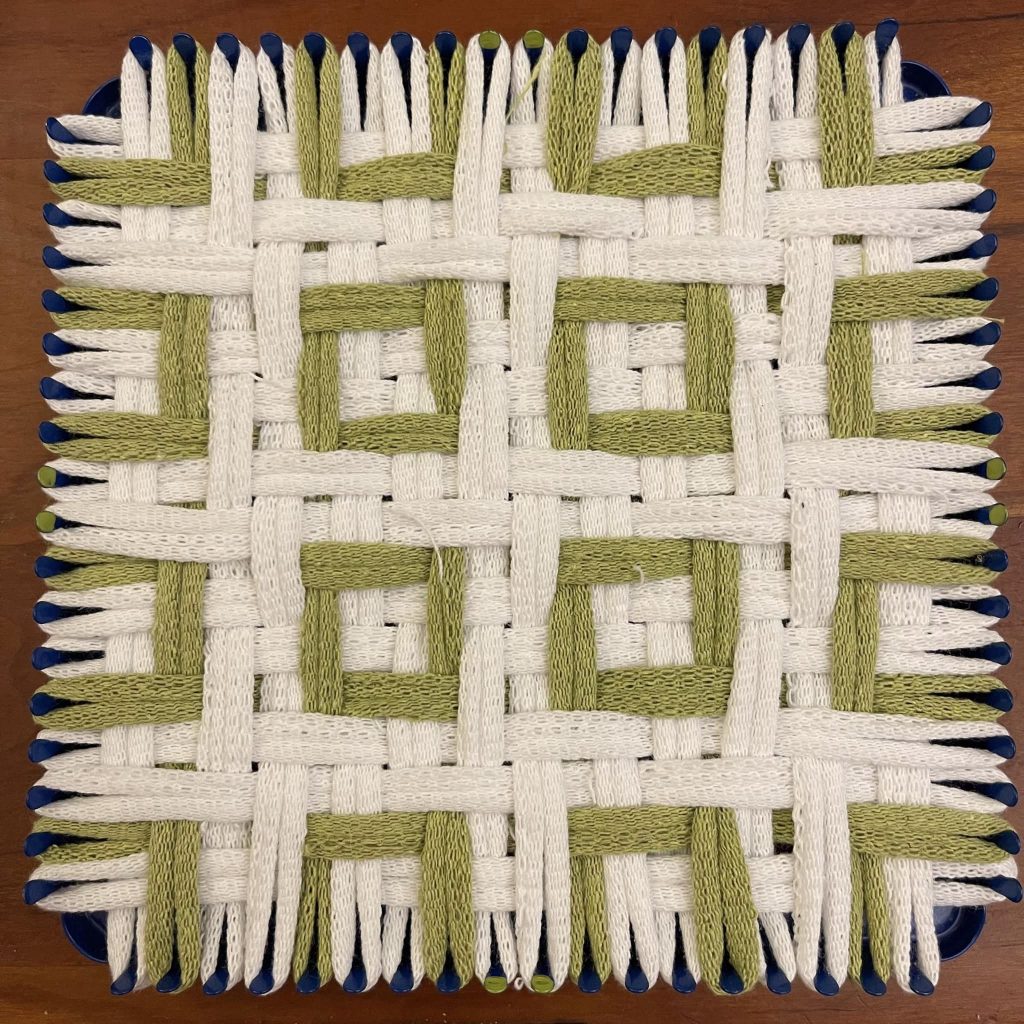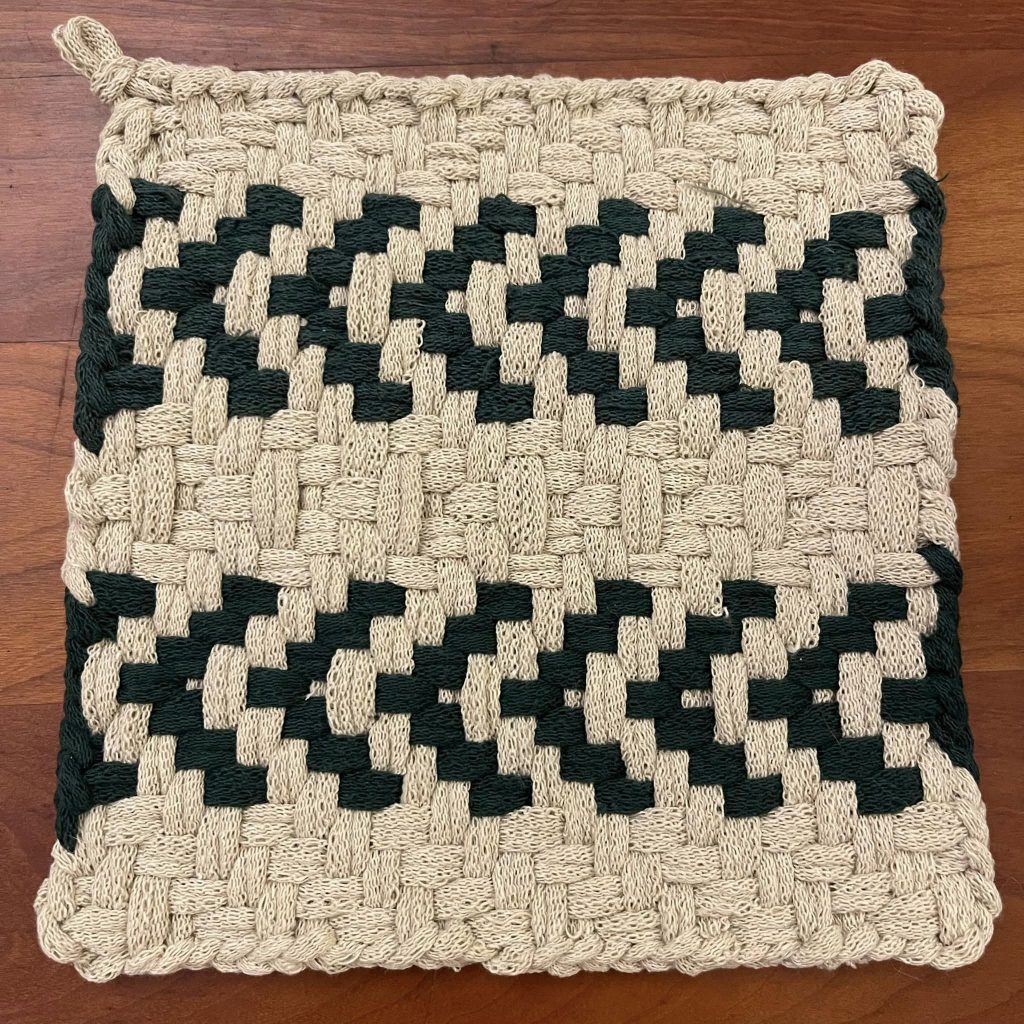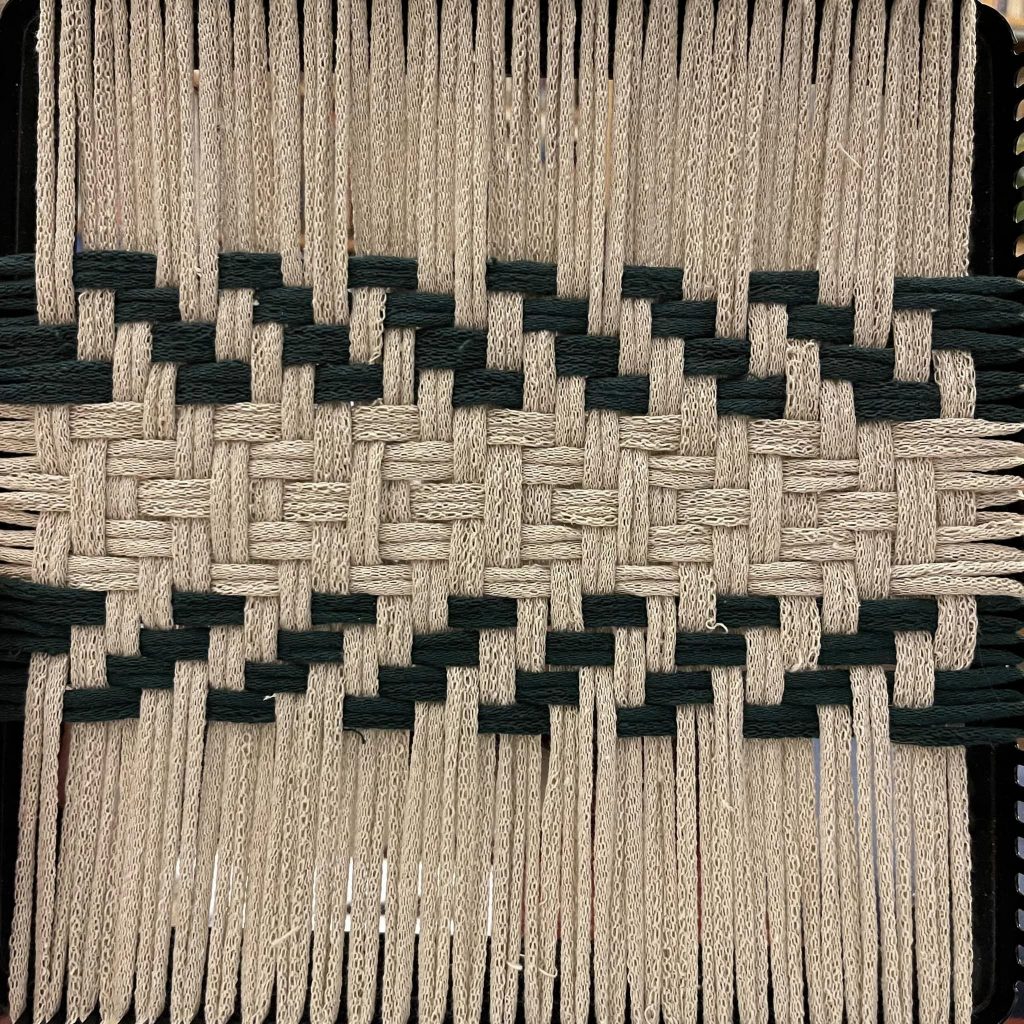I put together a little chart to help visualize the range of sizes produced by different weaving patterns.

The differences are striking: the long-float twills can be as small as 60% of the area of a plain-weave potholder (20% smaller in both height and width), but they make up for that by being up to twice as thick — or even more than that in the case of ribbed and waffled weaves.
This is definitely not an authoritative scientific survey — I just grabbed a ruler and took some rough measurements from a mix of recently-made samples fresh off the loom and well-worn ones that have been hanging in our kitchen for years.
There’s a lot of variation; in places where you see little black bars sticking out of the right edge, those show a range of smaller and larger measurements I took from different examples. There are multiple factors at play, but I suspect the biggest driver is the variation in loops — sometimes you’ll get a bag of loops that are stretchier or tighter than usual, and that impacts the size of the finished product.
These measurements are all from potholders woven with Harrisville (“Friendly Loom”) cotton loops, with no skipped pegs — if you’re using wool or poly loops, I’d expect the results to be different.




